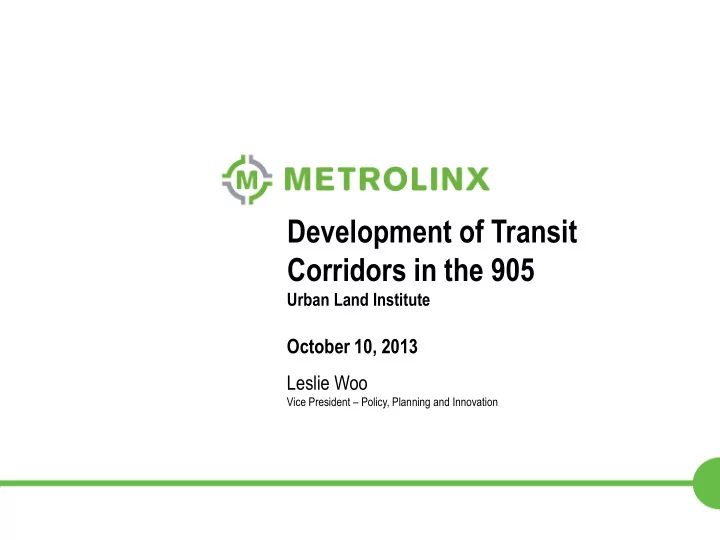

Development of Transit Corridors in the 905 Urban Land Institute October 10, 2013 Leslie Woo Vice President – Policy, Planning and Innovation 1
We’ve Got a Plan Increase the Triple the length of percentage of rapid transit people living within service in GTHA to 2km of rapid transit 1,725km to 81% Decrease Greenhouse Reduce commute Gas emissions from times to an average passenger of 77 minutes per transportation per person per day person by 29% 2
We’re Building a Regional Network 3
Union Station Revitalization Project 4
Toronto Light Rail Transit Projects 5
Georgetown South Project 6
Bus Rapid Transit Projects 7
Union Pearson Express 8
Investment Strategy Four Key Principles: 1) Dedication of Revenue Tools to Specific Outcomes 2) Fairness 3) Equity Across the Region 4) Accountability and Transparency 9
Investment Strategy 10
Achieving Equity Across the Region Allocation of Funds Regional Other Highways Transportation ‘416’ Initiatives Municipal Region 5% Support 5% 15% 58% 42% 75% ‘905’ Regional Region Transit 11
Connecting to the Regional Network Two-Way All-Day Service Connecting Corridors Strengthening the Regional Network
Station Area Development Potential 13
Case Study – Midtown Oakville exist xisting ing • Oakville GO station and future Trafalgar BRT terminus • Hub Study completed October 2012; working closely with the Town and Hydro One on implementation. • Intensifying the under-used publicly-owned lands (much of which is owned by Metrolinx) into a higher proposed pr oposed density, walkable community. • expanding the station to accommodate significant growth planned for the area and a future Trafalgar BRT. 14
Thank You leslie.woo@metrolinx.com www.metrolinx.com 15
Recommend
More recommend